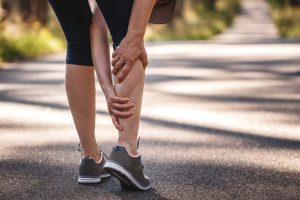
Cramping in the feet, calves, and thighs can be familiar to the untrained body. And it’s not even necessarily that muscles that have been dormant are suddenly being used; it could have to do with the fact that they aren’t adequately fed and hydrated.
Muscles can cramp up when you don’t drink enough water or have the right nutrients. To prevent the pain, eat well and drink plenty of water before, during, and after exercise.
But when the pain doesn’t go away even when you’ve been taking care of yourself, something more sinister may be at play.
Pain or cramping in your legs during physical activity might be an early sign of a condition called peripheral artery disease (PAD).
It occurs when plaque develops in the arteries of the extremities and restricts blood flow to the legs and sometimes arms. It is more common in older people and affects 10 percent of people in their 60s and 70s.
The most severe cases can lead to amputation.
PAD can be hard to spot when it’s in its earliest stages, but the first and most common symptom people notice is repeated pain, cramping, or heaviness in one or both legs while walking or doing exercise.
The cramps occur because blood cannot adequately deliver oxygen and nutrients.
Symptoms become more severe as it advances, so if you’ve been experiencing pain, it is essential to have it examined by your doctor. The earlier it is identified and treated, the better your outcome will be.
In most cases, treatments will include dietary changes to encourage heart health, blood flow, lower blood sugar, and more activity. Medications or medical procedures may also be recommended.